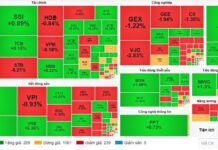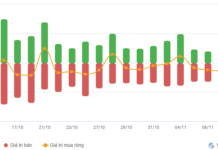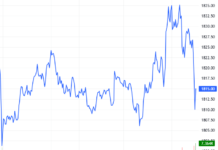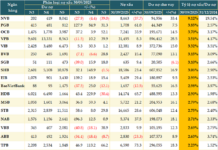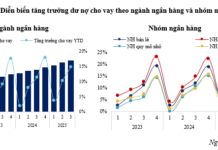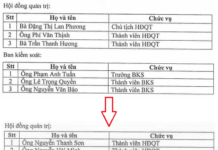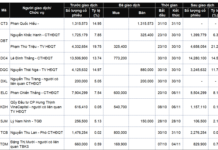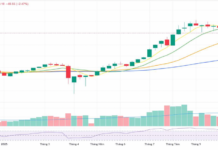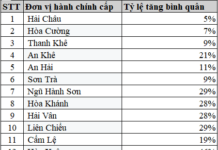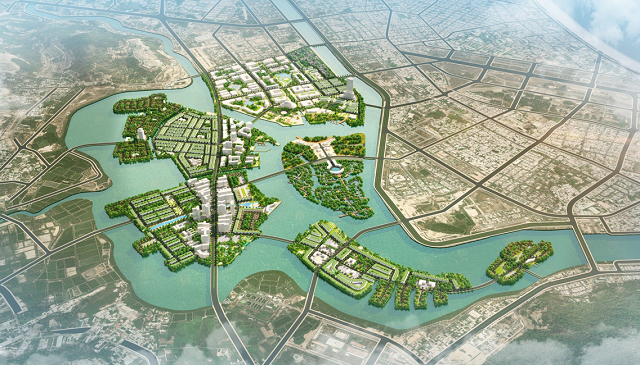Ms. Nguyen Hoai An, Senior Director of CBRE Vietnam, shared these figures at a seminar on “Real Estate Investment Focus in the New Context” hosted by The Leader magazine this afternoon (July 30th).
Commenting on the supply of Hanoi apartments in the past, Ms. Hoai An stated that a notable aspect was the significant concentration of mid- and high-end properties.
“The proportion of premium products reflects a new price level, especially in the premium price range. Approximately 70% of the apartments launched in the first half of 2024 belonged to the premium segment, priced at 60-120 million VND per square meter,” said Ms. Hoai An.
In its recent market report, real estate consulting firm Savills revealed that Hanoi saw no new apartment supply priced below 45 million VND per square meter in the second quarter.
It is evident that new apartments priced below 50 million VND per square meter have virtually disappeared in Hanoi. As a result, even with a budget of around 3 billion VND, it would be challenging to purchase a new apartment in the capital.
Regarding the pace of apartment price increases, CBRE recorded relatively moderate increments in Ho Chi Minh City’s secondary market, except for central areas, with most areas only rising by 1-2%.
In contrast, Hanoi’s secondary market experienced price increases in almost every area, from the center to the outskirts, ranging from 20-25%. Areas around the Ring Road 3 witnessed more noticeable price increases compared to distant areas.
“In the past two years, Hanoi’s apartment market has seen rapid and significant price growth. Overall, it appears that residents’ income growth has not kept up with the rising property prices in major cities like Ho Chi Minh City and Hanoi,” said Ms. Hoai An.
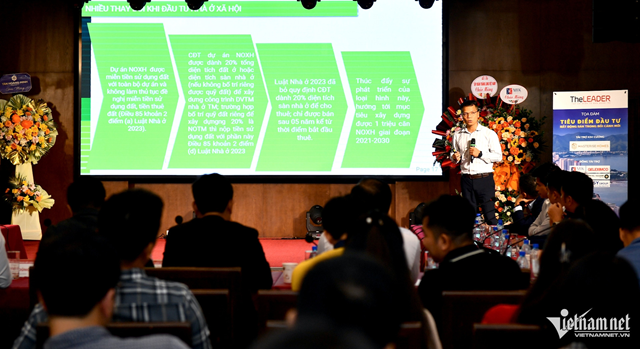 July 30th seminar on “Real Estate Investment Focus in the New Context.” Source: H.A
|
Mr. Le Dinh Chung, CEO of SGOHomes, pointed out that not only apartments but also other segments have witnessed significant price increases. Currently, land prices in Hanoi’s outskirts are above 100 million VND per square meter. Houses in alleys in the city center are priced at 140-160 million VND per square meter. For real estate low-rise projects, the lowest price is around 200 million VND per square meter.
Mr. Nguyen Dung Minh, Deputy General Director of MIKGroup, attributed the short-term issues, such as limited supply, as one of the factors influencing selling prices.
“From now until the end of the year and the beginning of the next, the average selling price will continue to rise. With the new legal corridor, I hope to see more large land funds and actual large urban areas of several hundred hectares and more,” said Mr. Minh.
Developers Confident in Social Housing, Buyers Rejoice
The upcoming enforcement of the Land Law, the Real Estate Business Law, and the Housing Law (amended) on August 1st is expected to address many challenges and obstacles faced by the real estate market in recent times.
Mr. Nguyen Quoc Khanh, Chairman of DTJ Group, acknowledged that, in addition to new land policies, the development of mini apartments and social housing is anticipated to meet the demands of residents, especially when income growth lags behind rising apartment prices, which are approaching 100 million VND per square meter.
Mr. Nguyen Hoang Nam, CEO of G-Home, praised the 2023 Housing Law for its provisions that facilitate the development of social housing and alleviate the shortage of affordable housing options.
According to Mr. Nam, before the laws take effect on August 1st, the decrees guiding social housing were already in place. Notably, resolving the land price determination bottleneck has significantly expedited the development of social housing projects.
Additionally, the removal of the condition limiting the monthly income of individual buyers (husband/wife) to 15 million VND, along with the inclusion of a combined monthly income limit of 30 million VND for both spouses, has significantly benefited homebuyers. These adjustments demonstrate the responsiveness of the Ministry of Construction and the Government to expert opinions.
“In developed countries, one in five people lives in social housing. This statistic underscores the rationale behind the ‘20%’ rule set by the managing authorities. With the substantial legal reforms, I hope that the upcoming circulars will address all challenges, giving developers the confidence to undertake social housing projects,” Mr. Nam expressed.
Hong Khanh



